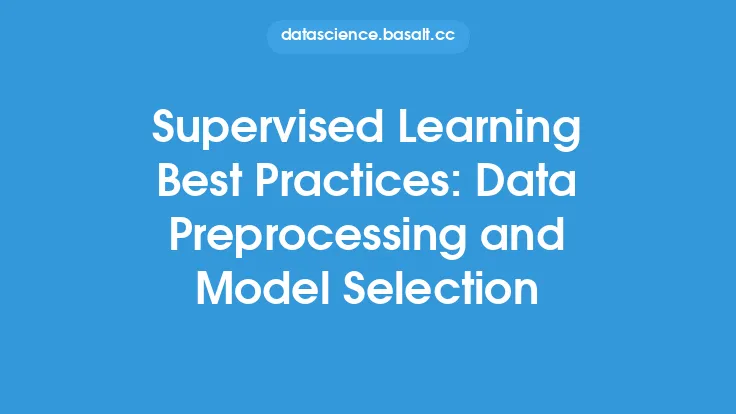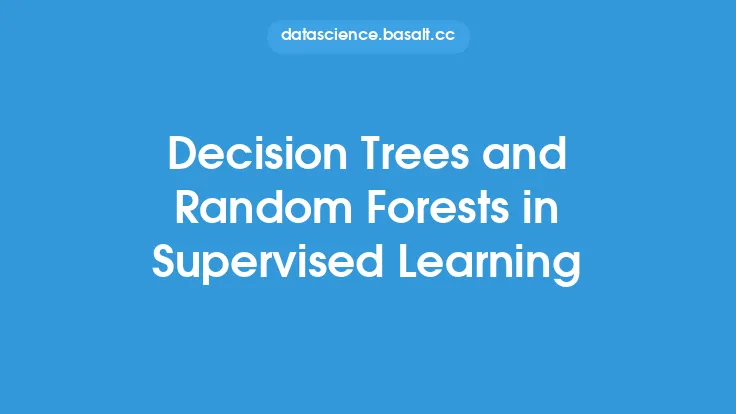Supervised learning is a fundamental concept in machine learning, where the algorithm is trained on labeled data to make predictions on new, unseen data. At the heart of supervised learning lies classification algorithms, which enable machines to categorize data into different classes or labels. In this article, we will delve into the world of classification algorithms, exploring their types, applications, and techniques.
Introduction to Classification Algorithms
Classification algorithms are a type of supervised learning algorithm that predicts a categorical label or class that an instance belongs to, based on its features. These algorithms are widely used in various applications, such as image classification, sentiment analysis, and spam detection. The goal of a classification algorithm is to learn a mapping between input features and output labels, so that it can make accurate predictions on new, unseen data. Classification algorithms can be broadly categorized into two types: binary classification and multi-class classification. Binary classification involves predicting one of two classes, whereas multi-class classification involves predicting one of multiple classes.
Types of Classification Algorithms
There are several types of classification algorithms, each with its strengths and weaknesses. Some of the most commonly used classification algorithms include:
- K-Nearest Neighbors (KNN): KNN is a simple, yet effective algorithm that predicts the label of an instance based on the majority vote of its k-nearest neighbors.
- Naive Bayes: Naive Bayes is a probabilistic algorithm that predicts the label of an instance based on the probability of the instance belonging to each class.
- Support Vector Machines (SVMs): SVMs are a type of algorithm that finds the hyperplane that maximally separates the classes in the feature space.
- Random Forests: Random Forests are an ensemble algorithm that combines multiple decision trees to make predictions.
- Neural Networks: Neural Networks are a type of algorithm that uses multiple layers of interconnected nodes to make predictions.
Evaluation Metrics for Classification Algorithms
Evaluating the performance of a classification algorithm is crucial to understanding its effectiveness. Some common evaluation metrics for classification algorithms include:
- Accuracy: Accuracy measures the proportion of correctly classified instances.
- Precision: Precision measures the proportion of true positives among all positive predictions.
- Recall: Recall measures the proportion of true positives among all actual positive instances.
- F1-Score: F1-Score is the harmonic mean of precision and recall.
- Area Under the Receiver Operating Characteristic (ROC) Curve: The ROC curve plots the true positive rate against the false positive rate, and the area under the curve measures the algorithm's ability to distinguish between classes.
Techniques for Improving Classification Algorithm Performance
There are several techniques that can be used to improve the performance of classification algorithms, including:
- Feature Engineering: Feature engineering involves selecting and transforming the most relevant features to improve the algorithm's performance.
- Regularization: Regularization involves adding a penalty term to the loss function to prevent overfitting.
- Ensemble Methods: Ensemble methods involve combining multiple algorithms to improve the overall performance.
- Hyperparameter Tuning: Hyperparameter tuning involves selecting the optimal hyperparameters for the algorithm to improve its performance.
Handling Imbalanced Datasets
Imbalanced datasets, where one class has a significantly larger number of instances than the others, can be challenging for classification algorithms. Some techniques for handling imbalanced datasets include:
- Oversampling the minority class: Oversampling the minority class involves creating additional instances of the minority class to balance the dataset.
- Undersampling the majority class: Undersampling the majority class involves removing instances of the majority class to balance the dataset.
- SMOTE (Synthetic Minority Over-sampling Technique): SMOTE involves creating synthetic instances of the minority class to balance the dataset.
- Class weighting: Class weighting involves assigning different weights to each class to balance the dataset.
Real-World Applications of Classification Algorithms
Classification algorithms have numerous real-world applications, including:
- Image classification: Image classification involves predicting the label of an image, such as object detection or facial recognition.
- Sentiment analysis: Sentiment analysis involves predicting the sentiment of text, such as positive or negative.
- Spam detection: Spam detection involves predicting whether an email is spam or not.
- Medical diagnosis: Medical diagnosis involves predicting the diagnosis of a patient based on their symptoms and medical history.
Conclusion
Classification algorithms are a fundamental component of supervised learning, enabling machines to categorize data into different classes or labels. Understanding the different types of classification algorithms, evaluation metrics, and techniques for improving performance is crucial for building effective classification models. By applying these concepts to real-world problems, we can build intelligent systems that can make accurate predictions and drive business value. Whether it's image classification, sentiment analysis, or medical diagnosis, classification algorithms have the potential to transform industries and improve our daily lives.





